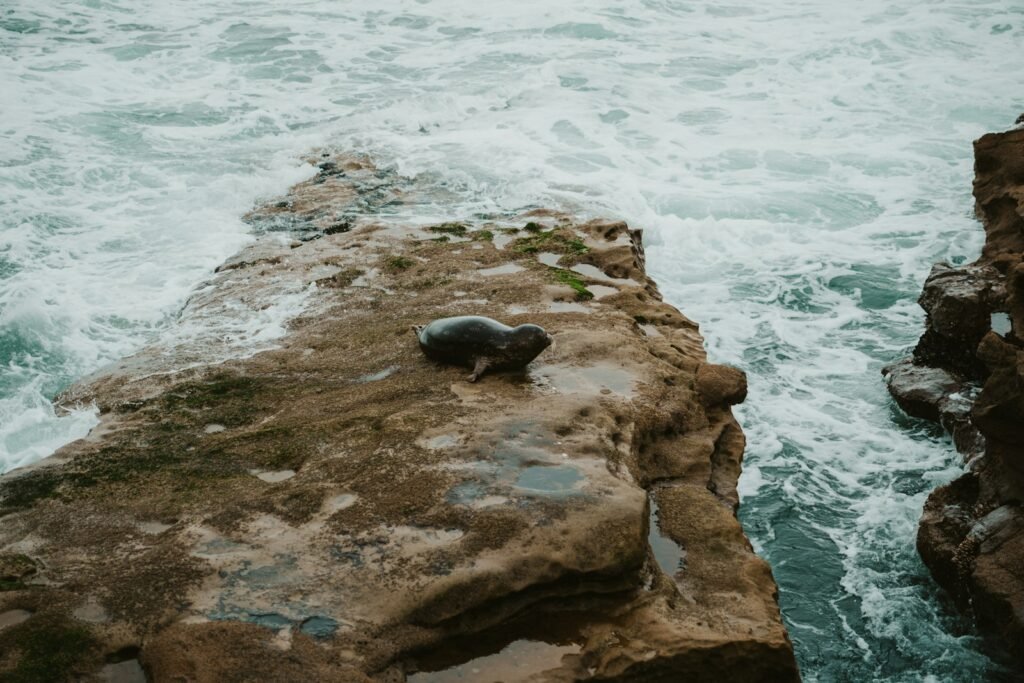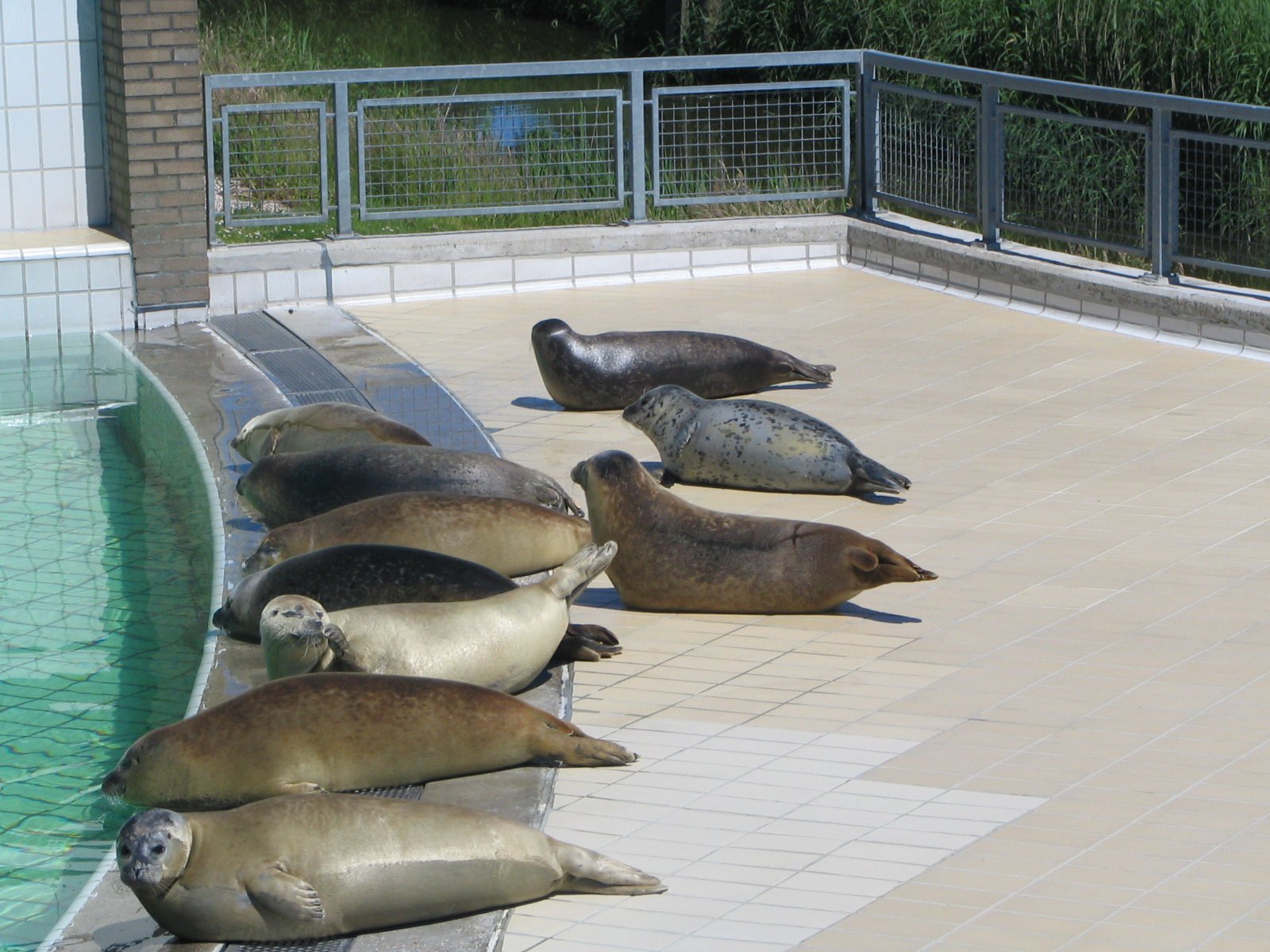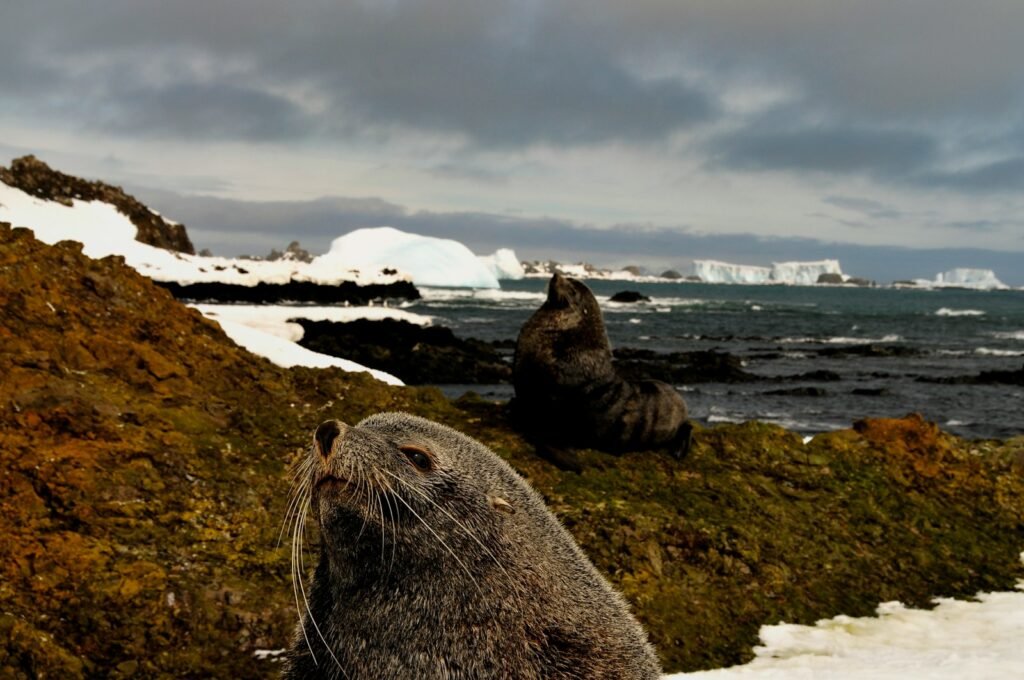A brisk wind whips across a lonely stretch of British coastline, carrying with it the cries of newborn pups and the distant barking of adults. The drama of life and survival unfolds here every day—where sleek, intelligent seals glide through icy waters or haul out onto rocky shores to rest, breed, and raise their young. These creatures are more than just a charming sight for coastal walkers; they are a vital part of the British Isles’ wild heritage, tangled in age-old myths, modern scientific intrigue, and even heated debates with local fishermen. If you’ve ever gazed into the soulful eyes of a seal, you know there’s a story waiting to be told—one of resilience, conflict, and surprising connections to our own lives.
Native Seals: The Grey and the Common

Two main seal species call the British Isles home: the grey seal and the common (harbour) seal. Grey seals, with their Roman-nosed profiles and mottled coats, are larger and more imposing. Common seals, meanwhile, have rounded faces and a gentler, dog-like appearance. Grey seals are mostly found along the rugged Atlantic coastlines, especially in Scotland, while common seals prefer sheltered bays, estuaries, and sandbanks. Despite their names, common seals are actually less numerous in some UK regions than their grey cousins. Each species has unique behaviors, vocalizations, and breeding patterns, making them endlessly fascinating to watch and study.
Pupping Season: A Coastal Spectacle
Every year, the British coastline becomes the stage for an extraordinary event—seal pupping season. Grey seals give birth in autumn and winter, often choosing remote beaches or rocky islets for safety. Mothers stay close to their fluffy white pups, fiercely protective as the pups grow fat on rich milk. Common seals, on the other hand, usually pup in early summer, and their newborns are ready to swim almost immediately—no fluffy white coats for these adventurous babies. For wildlife enthusiasts, witnessing a pupping colony is breathtaking, as dozens or even hundreds of seals cluster together, their calls echoing off cliffs and dunes.
Life in the Water: Masters of the Sea
Seals are perfectly adapted for life in the sea, moving with effortless grace beneath the waves. Their streamlined bodies, strong flippers, and thick blubber make them agile swimmers and skilled hunters. They can dive for up to half an hour and reach depths of over 200 meters, though most dives are much shorter. Seals rely on sensitive whiskers to detect the faintest vibrations in the water, allowing them to locate fish even in murky conditions. These adaptations help them thrive in the chilly, often turbulent waters surrounding the British Isles.
Haul-Outs: Resting and Socializing
Every seal needs to come ashore, or “haul out,” to rest, molt, and socialize. Favourite haul-out sites include secluded beaches, rocky islands, and even sandbars at low tide. Seals often gather in large groups, sometimes numbering in the hundreds, lying shoulder to shoulder in a jumble of sleek bodies. While ashore, they can look awkward and clumsy, but this is their downtime for vital activities like digesting food, shedding old fur, and catching up with their neighbours. Haul-outs also provide safety in numbers against predators and human disturbance.
Feeding Habits: Hunters on the Move
A seal’s diet is as varied as the seas themselves. Grey and common seals both hunt fish, squid, and crustaceans, but their preferences differ. Grey seals are known for their powerful jaws and may eat larger fish or even occasionally prey on smaller seals. Common seals tend to stick with smaller fish, such as sand eels and flatfish. Seals hunt mostly at night, using their keen senses to track down meals. Their foraging trips can take them dozens of kilometres from shore, and they sometimes dive deep to chase fast-moving prey.
Seal Intelligence: Clever and Curious Creatures
Seals are much smarter than most people realize. In captivity, they’ve been taught to solve puzzles, recognize symbols, and even remember trainers. In the wild, this intelligence shows up in their ability to learn, adapt, and innovate. Seals have been observed using objects as toys, working together to corner fish, and even outsmarting predators. Their curiosity sometimes brings them close to boats or swimmers, leading to memorable encounters for lucky humans. Scientists believe their intelligence is key to surviving in such a challenging and variable environment.
Seals in Folklore: Myths and Legends
For centuries, seals have inspired stories and superstitions across the British Isles. The selkie legends of Scotland and Ireland tell of seals that shed their skins to become human on land, only to return to the sea if their true nature is discovered. Fishermen once believed seeing a seal could bring good luck—or bad, depending on the village. These myths speak to the deep connection between coastal communities and the wild creatures sharing their world. Even today, the mysterious gaze of a seal can feel almost magical, hinting at ancient secrets.
Conservation Status: A Fragile Balance
Seals in the British Isles have faced dramatic ups and downs. In the 20th century, hunting, pollution, and disease brought populations dangerously low. Conservation laws, cleaner seas, and public support have helped many colonies recover, but dangers remain. Outbreaks of viruses like phocine distemper can kill thousands in a single season. Human disturbance, entanglement in fishing gear, and the impacts of climate change threaten their future. Conservationists work tirelessly to monitor seal numbers, protect habitats, and raise awareness, but the balance remains fragile.
Seal Watching: A Booming Passion

Seal watching has become a favourite pastime for locals and tourists alike. From the Farne Islands to the Norfolk coast, guided trips offer the chance to see seals up close without disturbing them. Quiet observation from a distance is vital; seals can be easily spooked, especially during pupping season. Watching a colony go about its business—pups nursing, adults sparring, curious heads bobbing in the surf—is an unforgettable experience. Responsible tourism supports local economies and encourages communities to value their wild neighbours.
Fishing Feuds: Conflict on the Coast
Not everyone welcomes seals with open arms. For some fishermen, seals are seen as competition, blamed for eating valuable fish stocks or damaging nets. Tensions flare, especially in areas where both humans and seals rely on the same resources. Scientific studies reveal that, while seals do eat some commercial species, their impact is often overstated. The real issues are complex, involving shifting fish populations, changing ecosystems, and economic pressures. Finding ways for people and seals to coexist remains a challenge—and a vital conversation for the future.
Entanglement and Pollution: Silent Killers
Modern life brings new threats for seals. Discarded fishing gear, known as “ghost nets,” can trap and drown unwary animals. Plastic pollution chokes waterways and beaches, where curious seals may ingest or become entangled in debris. Oil spills and chemical runoff further degrade their habitats, affecting the health of entire colonies. Conservation groups run beach cleanups and rescue operations, but preventing pollution at its source is the only real solution. Every piece of litter picked up is a small victory for these playful marine mammals.
Climate Change: Shifting Seas, Uncertain Futures
Rising sea levels, warming waters, and changing currents all impact seal populations in subtle but significant ways. Some traditional haul-out sites are disappearing beneath the waves, forcing seals to find new resting places. Altered fish distributions make hunting more challenging, especially for nursing mothers. Unusual weather can wash away entire cohorts of vulnerable pups. While seals are adaptable, the pace of change tests even their remarkable resilience. Scientists are racing to understand these shifts and help seals adapt to an uncertain future.
Urban Seals: Unexpected City Dwellers

Surprisingly, some seals have taken to city life, appearing in rivers, harbours, and canals far from their wild haunts. In London, a resident population of common seals lives in the Thames, thrilling commuters who catch a glimpse on their way to work. Urban seals face unique dangers but also find abundant food in the form of discarded fish and other prey. Their presence is a reminder that wild nature endures even in the heart of bustling cities, bridging the gap between people and the sea.
Seal Communication: Songs Beneath the Waves
Seals are far from silent. Grey seals, especially, are known for their haunting calls—long, moaning wails that echo across the water during breeding season. These vocalizations help mothers and pups recognize each other, establish territory, and attract mates. Underwater, seals use clicks, grunts, and whistles to communicate, creating a rich soundscape that scientists are only beginning to decode. Each colony has its own dialect, shaped by local conditions and family traditions, adding to the fascinating complexity of seal society.
Genetic Diversity: Bloodlines of the Isles
The genetic makeup of British seals tells a story of survival and adaptation. Isolated colonies have developed unique characteristics, some with rare coat patterns or distinct vocalizations. Genetic studies help scientists track population health, migration patterns, and the effects of disease. Protecting this diversity is crucial, as it gives seals the best chance of adapting to environmental changes. Every pup born is not just a new life, but a new thread in a tapestry stretching back thousands of years.
Seal Rescue and Rehabilitation: Second Chances

When seals get into trouble—injured by boats, sickened by pollution, or orphaned as pups—rescue centres step in to help. Across the British Isles, dedicated teams work around the clock to nurse seals back to health. Each animal is given a name, and its progress is tracked until it’s strong enough to be released. These rescues are often emotional affairs, with staff and volunteers forming close bonds with their charges. Watching a once-sick pup return to the wild is a moment of pure joy—and a symbol of hope for the species.
The Role of Seals in the Ecosystem
Seals are more than just charismatic megafauna; they’re key players in coastal ecosystems. As top predators, they help control fish populations and maintain balance in the food web. Their presence attracts scavengers and even affects the distribution of seabirds. By hauling out and defecating on land, they add nutrients to fragile dune and island habitats, supporting diverse plant and animal life. The health of seal populations is a powerful indicator of the broader health of the marine environment.
Citizen Science: Ordinary People, Extraordinary Impact

You don’t have to be a professional scientist to help seals. Citizen science projects invite everyone—from schoolchildren to pensioners—to count seals, report strandings, or monitor haul-out sites. These efforts provide crucial data for researchers, filling in gaps and spotting trends that might otherwise be missed. It’s a way for ordinary people to connect with nature, learn new skills, and make a real difference. Every sighting logged, every survey completed, brings us closer to understanding and protecting these remarkable animals.
Education and Outreach: Inspiring the Next Generation

Education is the key to long-term conservation. Schools, museums, and visitor centres across the UK offer programs about seals, marine life, and coastal ecology. Interactive exhibits, beach walks, and talks by experts spark curiosity and foster a sense of stewardship. Children who fall in love with seals today may grow up to be the conservationists of tomorrow. The more people know about the challenges and wonders of seal life, the more likely they are to fight for a wilder, healthier coastline.
Seals and Us: A Shared Destiny
The story of seals and people in the British Isles is one of connection, conflict, and co-existence. Whether celebrated in folklore, watched from clifftops, or debated in fishing villages, these animals hold a unique place in our hearts and history. Their future depends on the choices we make—about our seas, our waste, and our willingness to share the coast. As we look into the curious eyes of a seal basking on a rocky outcrop, we’re reminded that our destinies are intertwined, and that every effort to protect them is an investment in the wildness of our own world.




